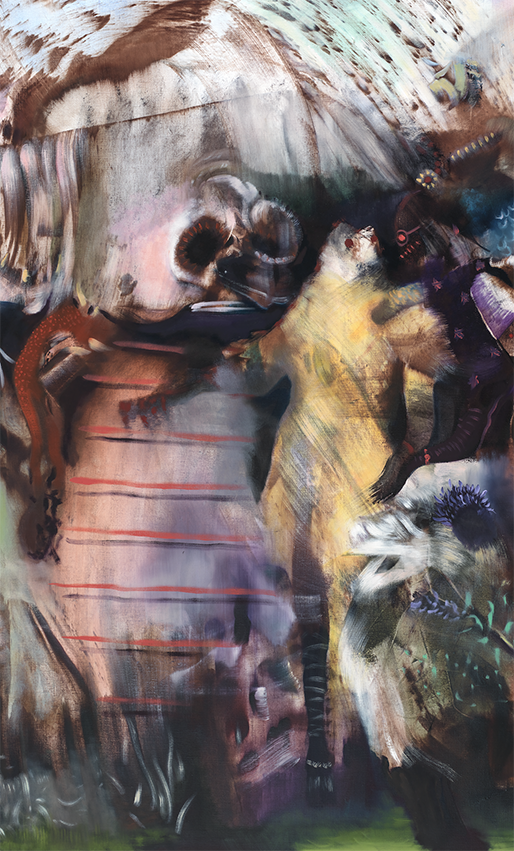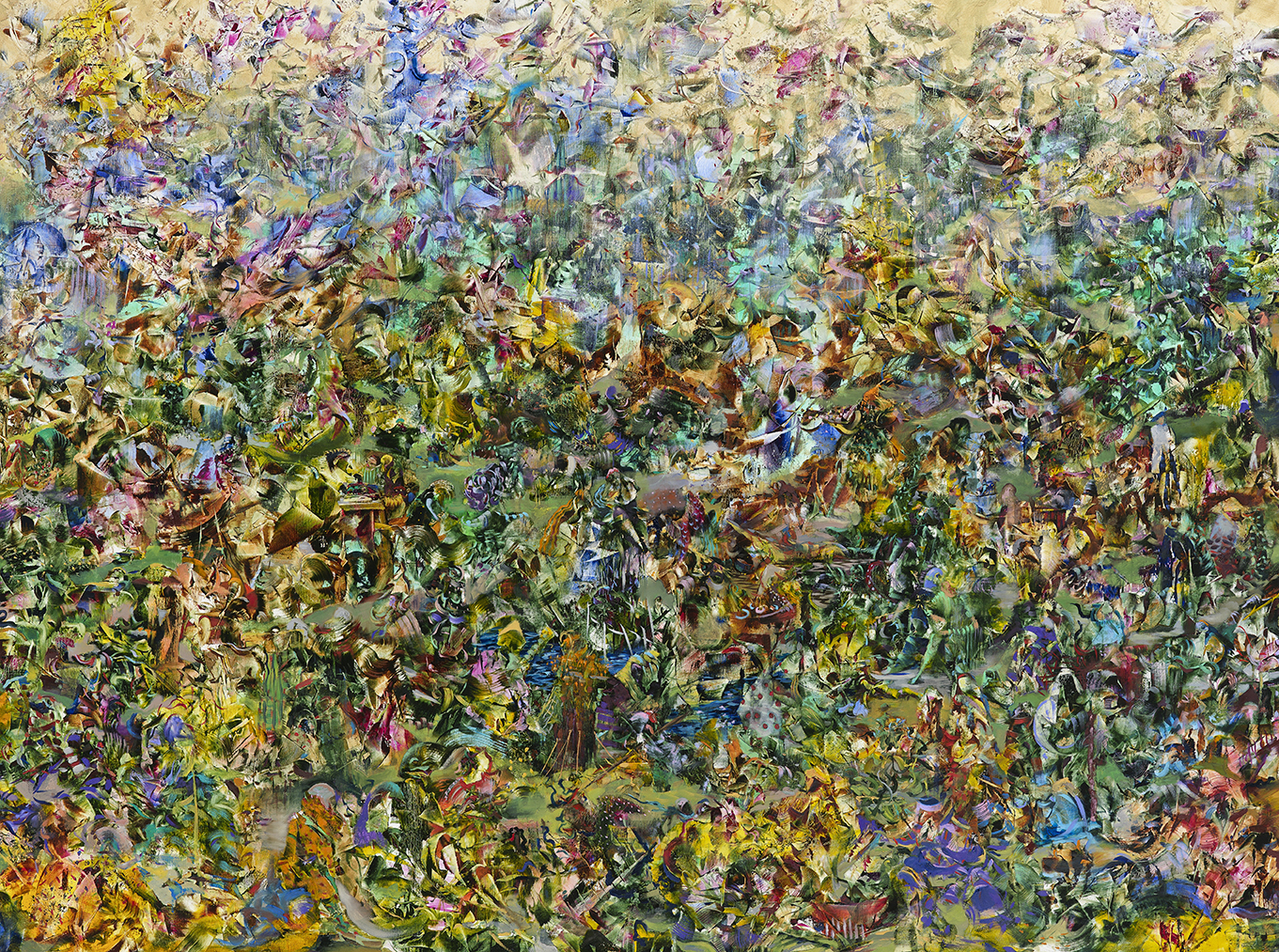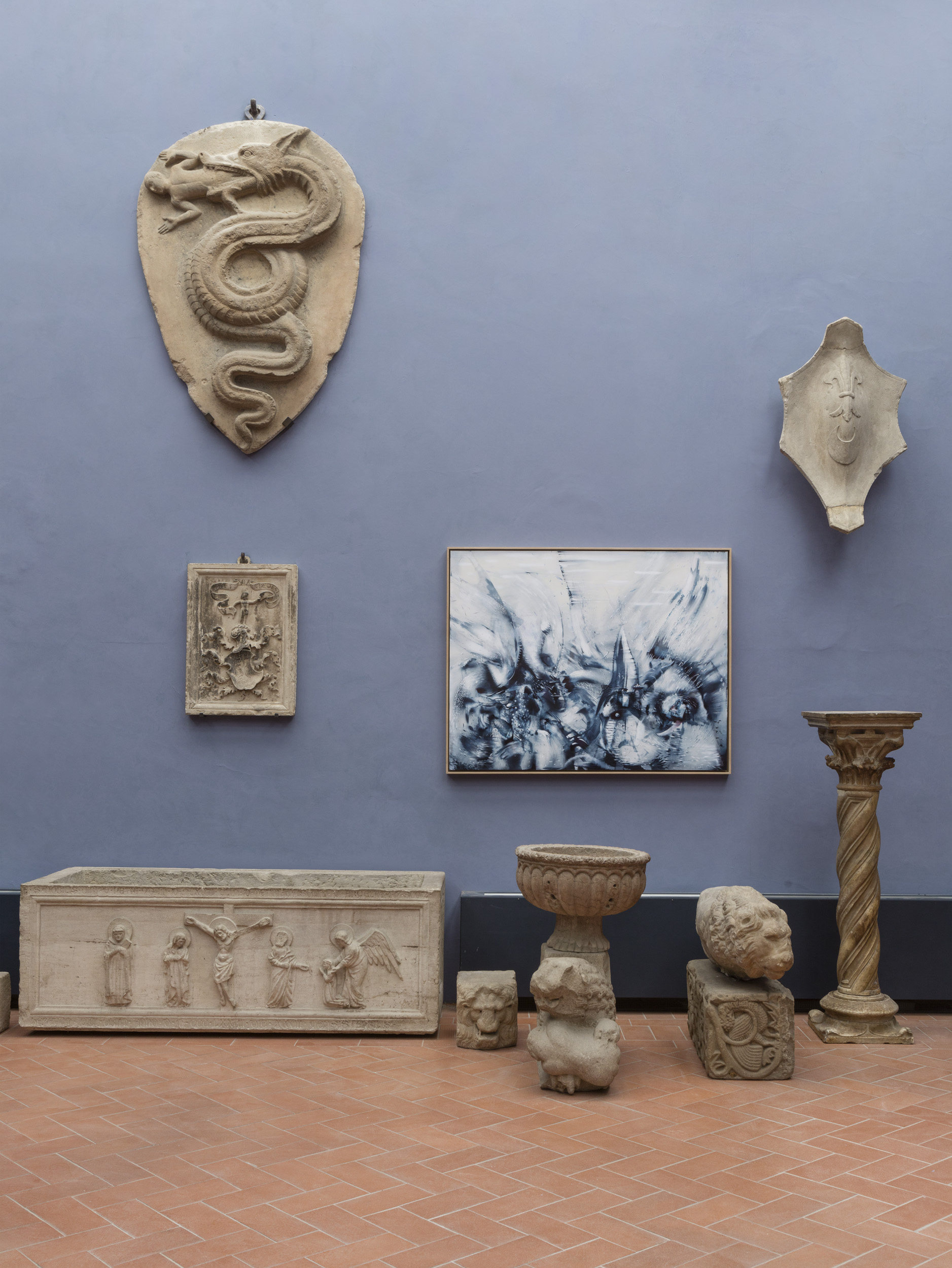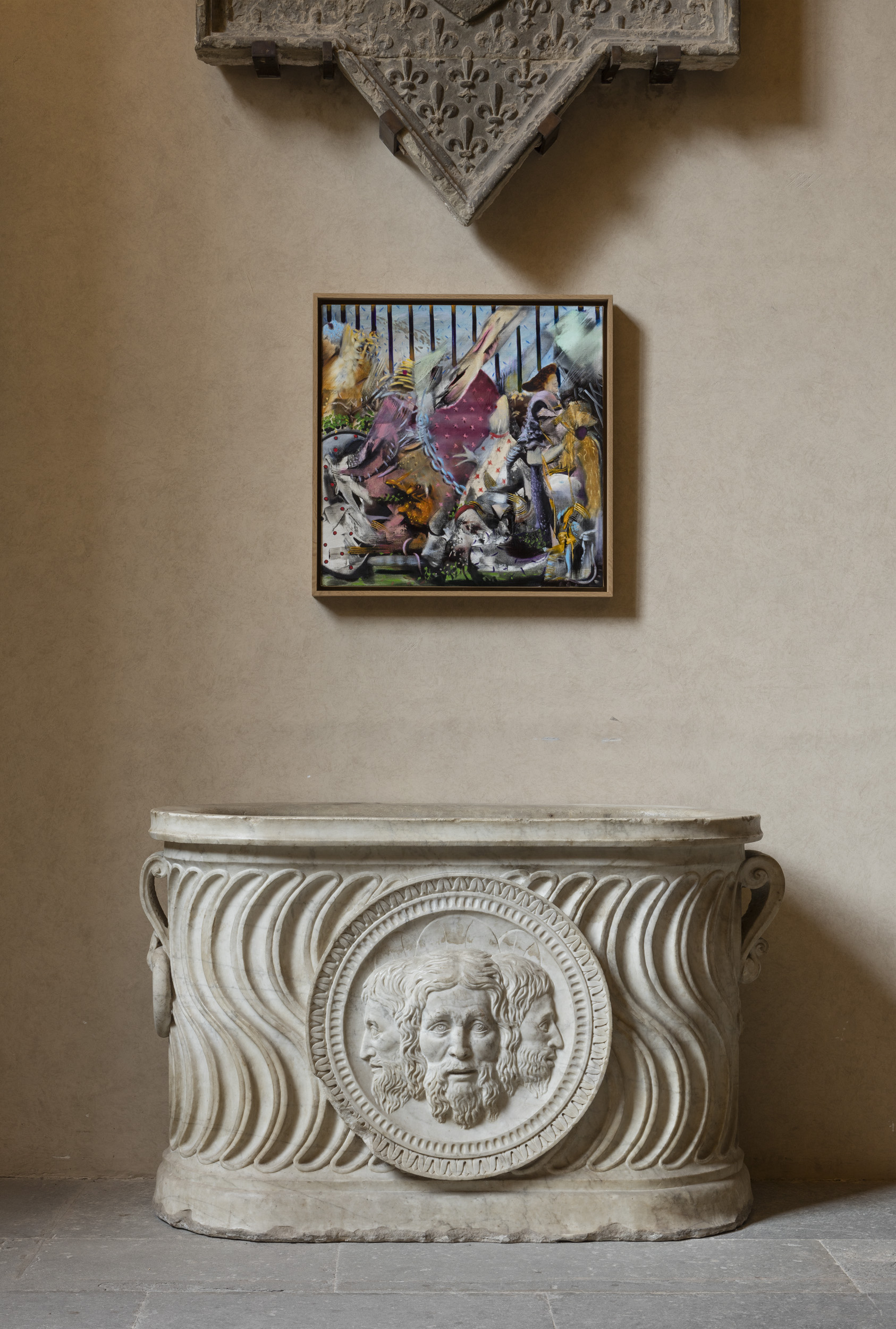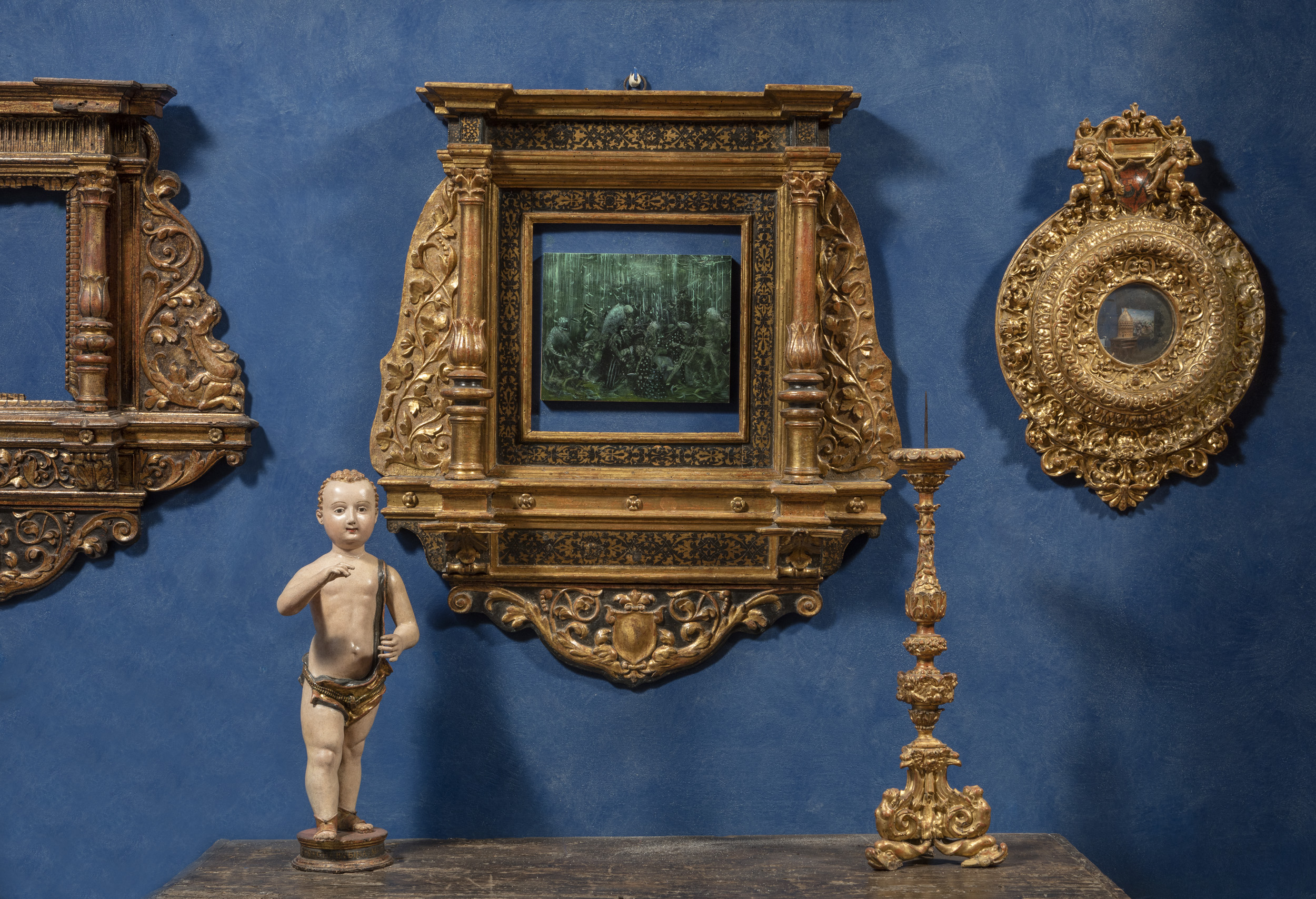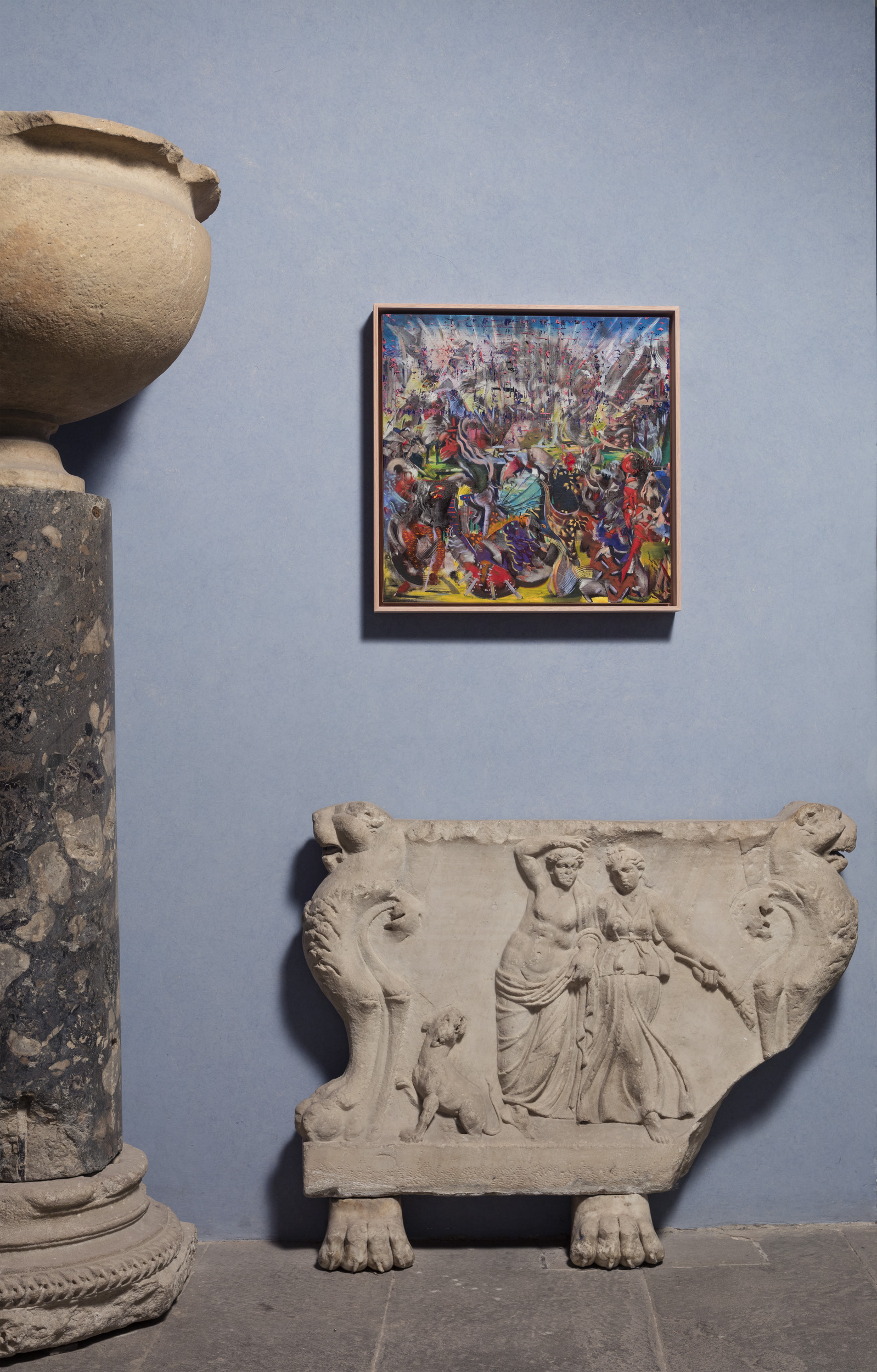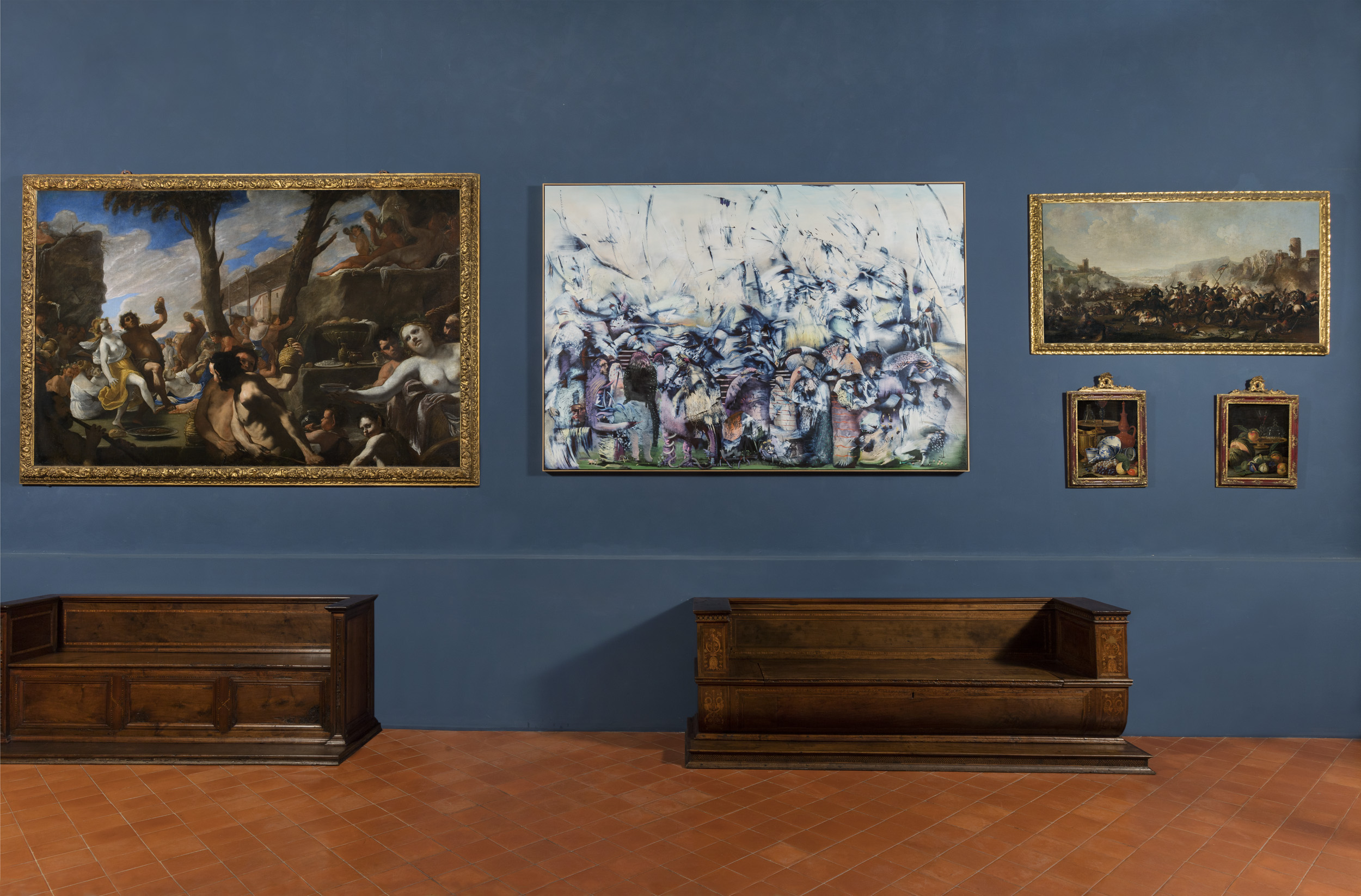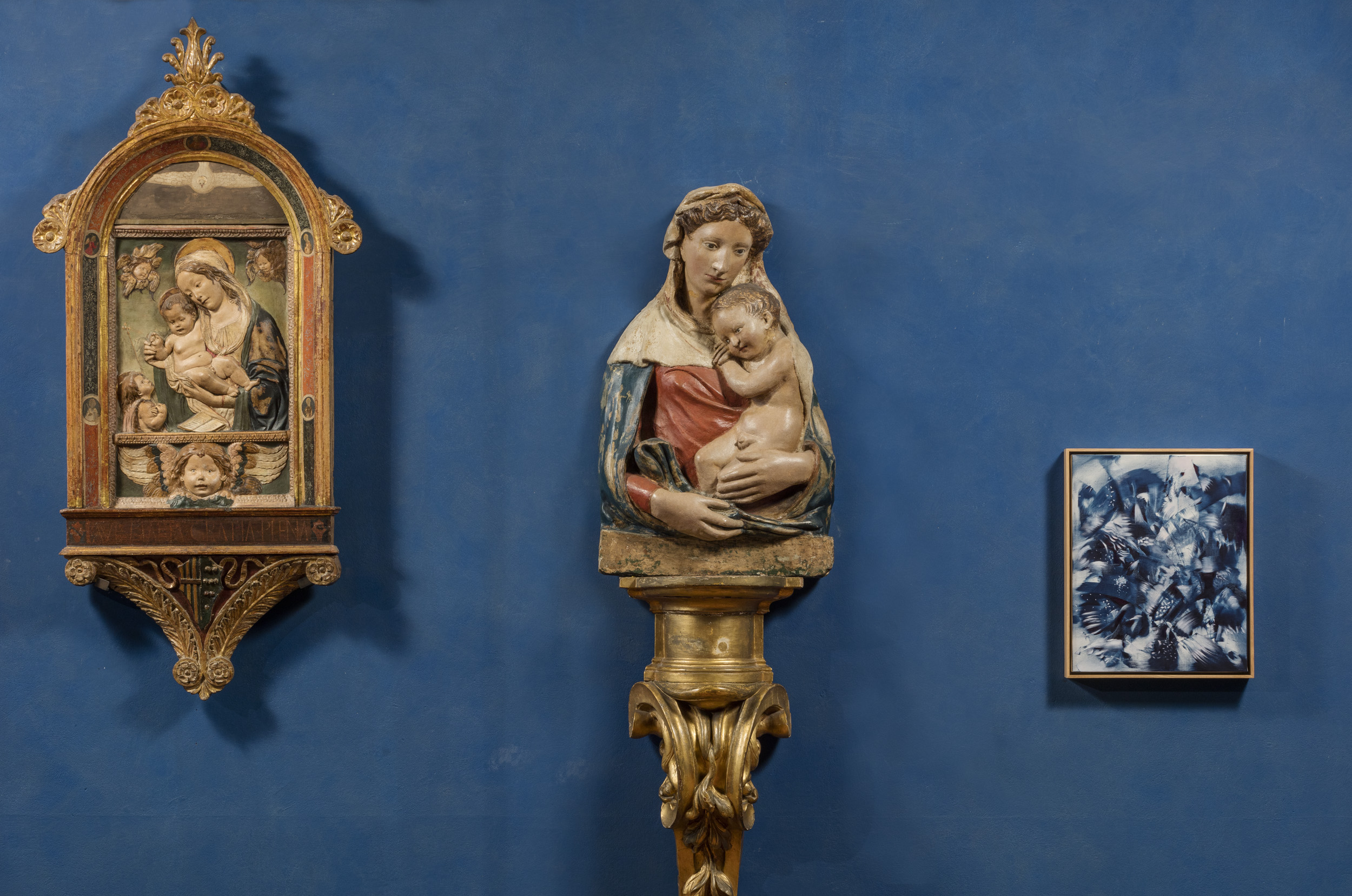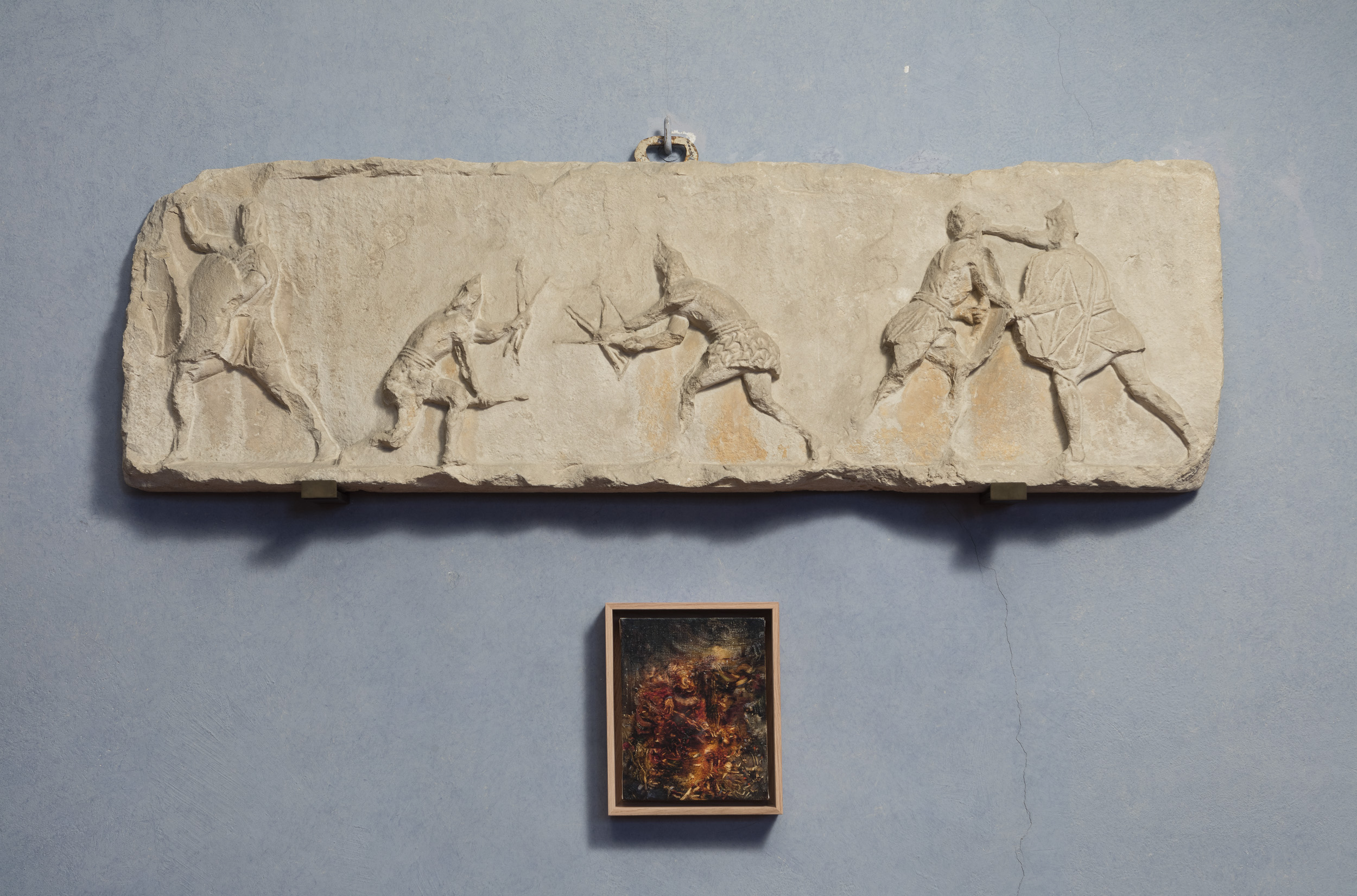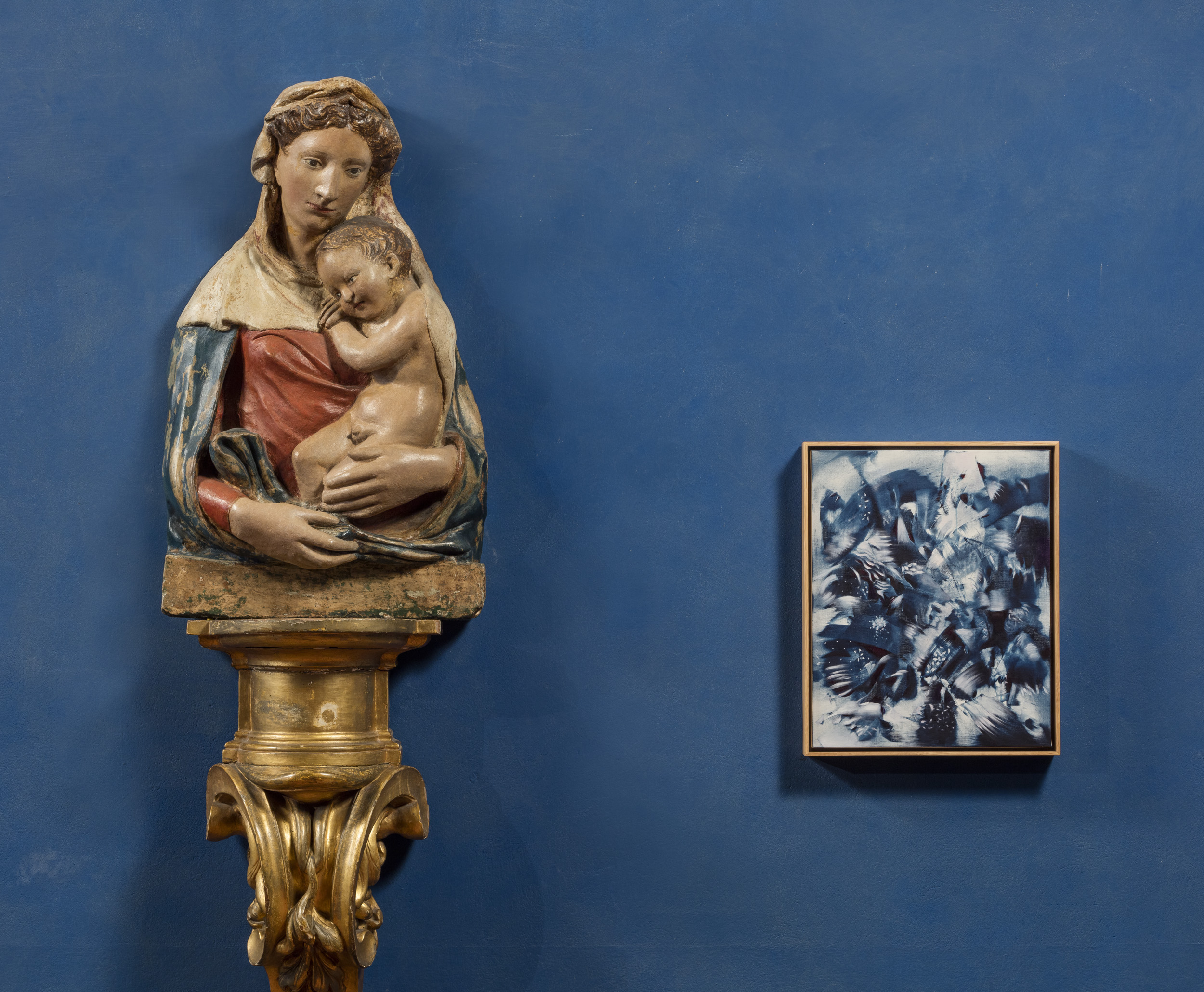Where and when
From
To
The exhibition compares the work of Ali Banisadr with the art and history of Florence: at the Bardini Museum the artist’s paintings will be in dialogue with the works of the collection created by Stefano Bardini, with marbles and medieval paintings and Renaissance, with Persian carpets and shining armor preserved in the museum characterized by the famous ‘blue’ Bardini, while in Palazzo Vecchio, Banisadr was invited to create three site-specific paintings, inspired by the reading of Dante’s Divine Comedy on the occasion of the celebrations for the 700th anniversary of the death of the Supreme Poet.
Exhibition Hours
Sala dei Gigli – Museo di Palazzo Vecchio
Monday – Sunday
9:00
–
19:00
Thursday
9:00
–
14:00
Museo Stefano Bardini
Monday – Sunday
11:00
–
17:00
Tuesday
Wednesday
Thursday
On the occasion of the celebration of the 700th anniversary of Dante’s death, the Museo Novecento Off project pays homage to the great poet with the personal exhibition of Ali Banisadr. Beautiful lies, in the double headquarters of the Palazzo Vecchio Museum (Sala dei Gigli) and the Stefano Bardini Museum.
After leaving Iran at the age of twelve with his family, Banisadr first reached Turkey and then the United States, stopping first in San Diego, then in San Francisco and then in New York, where the artist lives. today again.
“As a rule, I have always been interested in historical Renaissance paintings, because they are more allegorical, mythological, and do not refer to a particular time and place. I have never been a fan of nineteenth century history paintings since they became propaganda and focused on national histories, on a given time and place.
-Ali Banisadr
Banisadr’s paintings are inhabited by a surreal cast of characters, seemingly appearing and disappearing, as if raked and swept over by a storm and dragged into an apocalyptic chaos. It is a pandemonium, albeit an orderly one, even if every creature does not correspond to an identifiable character. Everything is in motion, the different areas of his painting move at different speeds; here the characters stand still, now they are restless, buzzing with energy.
There is something fascinating and puzzling, which denies any objective description, and the subject seems both evanescent and mysterious, arousing wonder. These compositions are like a symphony with high pitch, dissonant notes finding an equilibrium thanks to a subtle organisation of depth planes, colour tones and temperature and that synesthetic attention with which points of strength are distributed across the canvas, without a main focus or a privileged point of view.
As in a bird’s flight, the view is taken from above and one’s gaze never concentrates on a single focal point, a single action, a prominent character, while almost confounded by the variety of anthropomorphic or naturalistic detail, as in a carousel, when the whole world spins and starts losing focus as a result of speed. Hierarchy disappears. Banisadr does not use geometric perspective to line up the elements in order of importance. Jackson Pollock, Lee Krasner and Willem de Kooning, as well as Hieronymus Bosch and Pieter Bruegel the elder come to mind.
Attracted by a surprising chromatic research, we proceed to navigate with our gaze in a sort of eccentric cosmogony seen from above and then drop down towards the microcosm, animated by countless details, and it is as if the carousel slows down and the gaze rests on mysterious revelations, incomprehensible, improbable beings, belonging to fantastic worlds, to the monstrous and otherworldly. In his aesthetic experience, abstract and figurative, modernist language and medieval imagery coexist. The agitated whirlwind of his canvases stages an entire world, which draws on the past and the present, and preserves both of them, offering us a timeless vision that is never limited to a closed cultural context, simultaneously drawing inspiration from the art of yesterday and today. The agitated whirlwind of his canvases stages a whole world, which draws on the past and the present, and preserves them both, offering us a timeless vision that is never limited to a closed cultural context, drawing inspiration simultaneously from the art of yesterday and today.
Ever since I immersed myself in Dante’s Inferno, a whole world has opened up to what is contained in his verses. Dante collected a lot of fragmented knowledge, drawn from old epics, mythology, history and politics, giving life to a visionary work. I am fascinated by these multidimensional worlds in which the poet collects an entire universal encyclopedia of knowledge. I am also fascinated by how many figures can coexist within a person, because psychologically speaking, all the characters that Dante meets in Hell are in a sense the voices and ideas of the characters themselves that resonate in his mind.
-Ali Banisadr
Artist
Ali Banisadr
1976, Tehran
Curated by
Sergio Risaliti
Scientific Coordinatioon
Francesca Neri
Eva Francioli
Luca Puri
Press
Lea Codognato | Caterina Briganti | Davis&Co.
Press Office Museo Novecento
T. 055 2347273
Comunication
Costanza Savelloni
Visual Identity
Dania Menafra
Ph credits
Serge Domingie

